The Ultimate Guide to Using Video for App Marketing
Video Creatives
November 29, 2018
So you’re creating a promo video for your app or a game trailer produced.
You know why you’re doing it: if a picture (or screenshot) is worth a thousand words, imaging how powerful a video can be to show what’s unique about your app, etc.
You probably already have several ideas on how you’re going to use it.
But since you’re spending money and/or time on that video, shouldn’t you make sure you plan it right and make the best out of it?
Well, we’re happy to help you out with this. After all, it’s in our interest to prove you what we believe in: video is one of the best assets you can have when promoting your app.
Different Channels to Use Your Video for App Marketing
The type(s) of video you want to create is going to depend on where you plan to use it. And I’m not talking about the style here (motion design, live video, etc.), but rather the content and purpose of the video.
Before starting to work on your video, you want to know if you’ll use it on the app stores (and which ones – formats differ), for user acquisition (here to, formats can vary) or for something else (website, PR, etc.).
Not only we’re going to give you plenty of ideas on where to use video to promote your app, we’re also going to give you some tips on how to get the best out of every channel and what kind of videos works best on each.
Let’s dive in.
Video on App Stores
There are some important differences between video on the Google Play Store and video on the iOS App Store. Check out this article where we compare iOS vs. Play Store videos.
Video on the Google Play Store
This has (obviously) been one of our favorite features of the Google Play Store: it lets you add a video.
It’s one of the most visible assets on your Google Play Store page. It is a YouTuve video that shows up right next to the app screenshots on desktop and can be played by tapping the play button (situated over the feature graphic) on mobile.
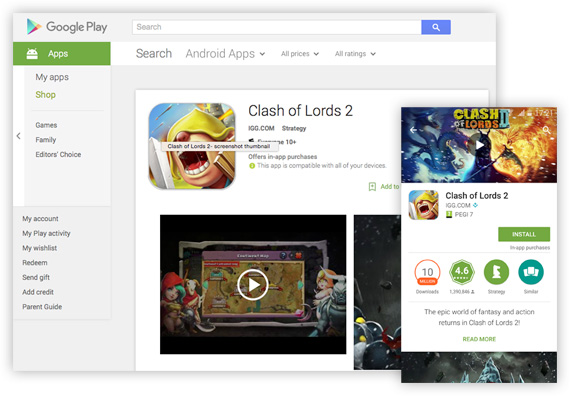
In one click (or one tap if they are on their phone or table) and a few seconds, visitors can know why they need your app or want to play your game.
What’s pretty cool about it too, is that the views you get on your video through the Google Play Store count as views on YouTube. And the more views you get on YouTube, the higher your video is ranked in YouTube search results and therefore Google search results (more on that later – engagement matters a lot as well).
A few tips:
- Google Play allows you to localize your video, so you can have one video per language. That’s pretty awesome if your users don’t all speak English and you’ve produced the video in several languages.
- If you haven’t translated your video itself in several languages, what you can do is create transcripts in different languages and add that on your YouTube video. YouTube will automatically display the right transcript based on the user’s language settings.
- With Play Store listing experiments you can split test different variants of creative assets, including promo video. This means you can better assess the impact of video, and optimize your video (and the feature graphic) so it performs better.
Video on the iOS and tvOS App Stores (App Previews)
At the WWDC14, video was introduced on the App Store and it is called an App Preview.
Since then, we’ve produced quite a few. And if you want to read about our thoughts on why they are great and not so great as well as get some tips, check out this post on iOS 11 app previews.
Also make sure that you watch the WWDC14 video on the topic “Creating Great App Previews” to know more.
Here are Apple’s guidelines and below the main specifications for App Previews:
Since tvOS was introduced, you can now also produce App Previews for Apple TV apps.

As mentioned, App Previews are device specific. Apple used to require uploading a different video file for each resolution (iPhone 6 Plus series / iPhone 6 series / iPhone 5 series). You can now upload just the highest resolution (iPhone 6/7 Plus) and iTunes connect automatically creates the lower resolution files for you (if you want to).
You can unfortunately not A/B test with iTunes connect, so assessing the impact of a change on your App Store listing (like adding a video, changing the screenshots, etc.) is really hard. What you can do however is use iTunes Analytics to do a pre-post analysis and measure the change in conversion rate.
Video on Alternative App Stores (Amazon)
It’s not all about the App Store and the Google Play Store (advice #6).
If you have an Android app with engaged users, you should consider alternative app stores to get additional distribution channels.
The most famous is the Amazon App Store, where you can also have a video.
There are a lot of other alternative app stores.
Here are some that let you add video to your app page:
- http://soc.io/
- http://slideme.org/
- http://www.appbrain.com/
And if it’s a YouTube link those stores ask you, it’s another opportunity to get some views.
Video ads
Creating additional videos (often 10s, 15s or30s, but sometimes even shorter depending on the channel) for your app is definitely a good idea if you’re considering video ads. You can use those video ads for user acquisition on Facebook, Instagram, Google or some video-focused ad networks.
Here are some video ads we’ve produced:
Facebook Video ads
Facebook ads allow to target a very detailed audience, at scale (advice #4).
You can match your database with Facebook to target your best users or reactivate some, find people that are like your best customers (lookalike audience), etc.
Their photo page post ads were pretty effective, with a direct “Install Now” (or “Play Game”) call to action below it that leads directly to the App Store or Google Play Store.
And you can now have basically the same thing, with a video thumbnail that allow your potential customers to watch a video about your app. If they like what they see, they just have to tap the “Install Now” button and are brought to their app store.
Here is a case study on Facebook video ads for the Jurassic World game (we produced the video), which led to good results.
A few tips:
- Choose the right thumbnail, which probably means creating a custom one that shows your app name and a screenshot, as well as other visual assets if it helps branding
- Craft the right one-sentence pitch. It displays above your video thumbnail.
- Do not rely on sound for your video, as videos autoplay without the sound (users only get the sound when choosing to). If you adapt a video to create your video ads, think about adding some text call-outs.
- When new formats appear, try them out. Square videos for example maximize the screen real estate used and tend to give better results.
- And below some advices by Facebook
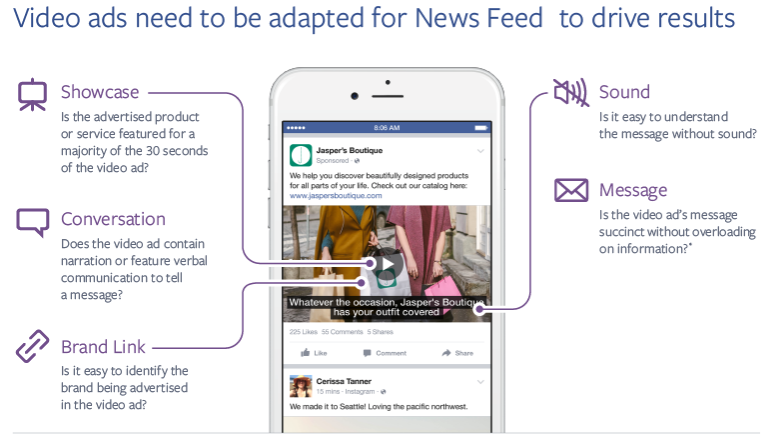
Instagram video ads
As of September 2015, Instagram had 400 million monthly active users.
With stats like that, it seemed logical that Facebook decided to monetize it with ads. And this time, it seems it only took a few months to go from traditional square image ads available to video ads for mobile app installs available to businesses of all sizes, everywhere.
If you’re already managing ads on Facebook, using them on Instagram will be just as easy: you can use Facebook’s power editor.
Instagram recommends a 1:1 ratio (square video), although this is not required. So just like on Facebook, you can experiment and see what works best. There used to be a 30 seconds limit, but it is now at 60s (which is more than enough for a video ad – you should shoot for something short).
A few tips (for more tips, check out this post on how to create great Instagram videos):
- When creating your video, keep in mind that as for the Facebook ads, the video plays without sound until the user taps on it.
- Like all videos, the first few seconds are crucial. Especially since the videos autoplay. You want users to keep watching and decide to play the sound.
- If you have more audience/better targeting on Facebook, test your video ads on Facebook then use the best performing ones on Instagram
Now that Instagram Stories ads are available, you have yet another way to reach potential users.
Video ads via Universal App Campaigns
Google is not new to ads.
Even though they’ve acquired YouTube a long time ago, it however took some time before they came up with a format for mobile app install ads.
They first started with what they called “TrueView for mobile app promotion” campaigns (or just “YouTube for app installs”) that let you reach people on YouTube that have interests related to your app or are watching content relevant to your app. Your ads only run on YouTube mobile and tablet apps (not on desktop) and you can choose topics, channels or even specific videos you want to target. It works for both iOS and Android campaigns.
By introducing Universal App Campaigns and replacing all previous Adwords app install ads with a much more AI-based approach, Google radically changed the way these ads are handled. Publishers/advertisers now have one unique place where to handle their campaign.
So all you have to do is define Ad text idea (4), upload image ads (up to 20) and upload your videos (up to 20!). You handle bid and budgets but targeting is fairly limited since the algorithm find users based on the optimization you choose. There are 2 different types of campaigns:
- Install volume – campaigns that optimize towards getting downloads (they can still take into account in-app events_
- In-app actions – campaigns that optimize to get the best cost for specific in-app event(s) that happen after the install (like a user registering or getting to a specific level). This requires to set up conversion tracking, either with Firebase or a 3rd party like Adjust.
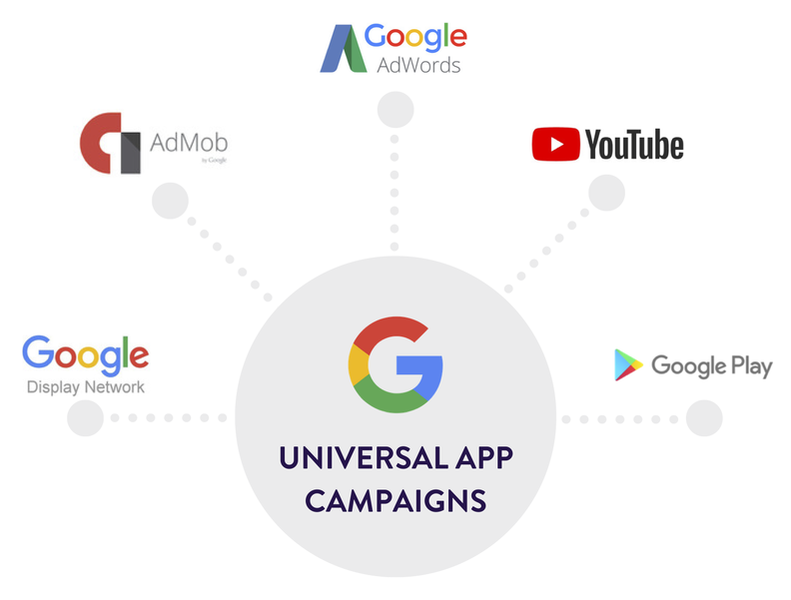
When using video creatives in your Universal App Campaigns, your videos can end up in 3 places:
- YouTube
- AdMob network (within other apps or games)
- Google Play (currently in beta testing)
The way ads are displayed to YouTube users hasn’t changed, though.
These TrueView ads were appearing before the video that a user wants to watch, with a “Skip” button that becomes available after 5s.
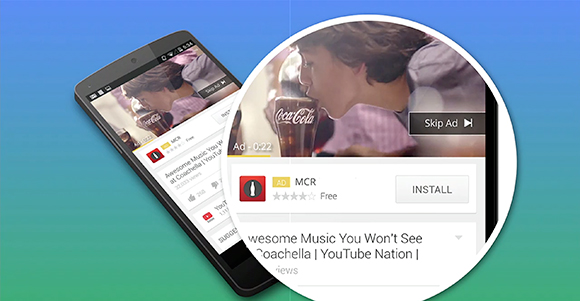
Below the video you can find the app icon, ratings and a call to action (Install button). When a user taps the Install button, an in-app App Store (or Google play store) screen appears to download the app directly from within the YouTube app.
To make sure that you only pay for people interested in installing your app, Google recommends to make the call to action screen last five seconds or more (go for 10s). This long static call to action should prevent users from watching the whole video (or 30s of it if your video is more than 30s) without taking any action: if they leave you don’t pay, if they click install you pay (but you got what you wanted).
A few other tips:
- Make the first five seconds count – after those 5 seconds, the user can skip your ad so you need to convince them to stay!
- Introduce your brand early
- Keep it short, between 15 and 30 seconds
- Show it in many ways – repeat your message using different videos with the same theme (think Clash of Clans)
- On your end frame, make sure you showcase your mobile app, the official mobile app stores icon and a call to action
For more tips, check out our post on how to optimize your Universal App Campaigns creative assets.
Twitter video ads
There was no way Twitter would stay on the sidelines, especially since they’ve been allowing mobile app promotion via app cards in June 2014.
About a year after, they’ve introduced mobile app install ads with video.
“It’s an immersive experience to have video directly in the tweet. It creates great performance and lets marketers convey a lot more about what the app does.”
– Richard Alfonsi, Twitter
Time will tell how effective those Twitter mobile app install video ads are, but if you already have a video ad for your app our your game and your audience is on Twitter you should definitely give it a try.
Targeting works pretty much the same way: you can target by location, specific devices and OS (including new devices), mobile carriers, but also things like keywords/followers/interests or using your own data with Tailored Audiences.
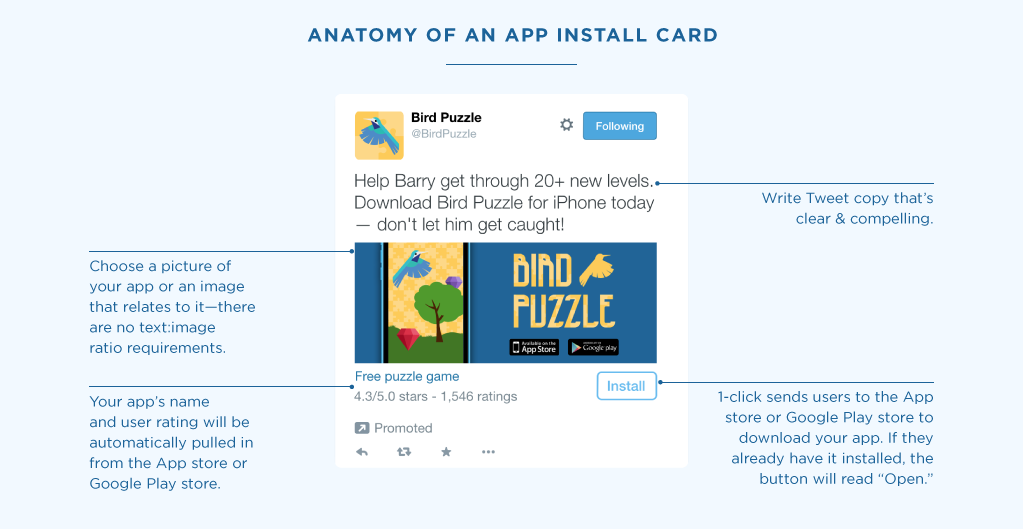
Most advices you’ve already seen on this blog are also valid for video ads as well. Except here it’s also the actual video asset you need to focus on.
Videos are autoplay and like for Instagram and Google, there is an in-app download page appearing when tapping the Install button.
Some tips:
- Get inspiration from some case studies/success stories (not video specific) as well.
- Try out different variation of your video (especially the beginning) to see what performs best, and also tweak the copy
- Like for Faxebook and Instagram, do not rely on sound
Specialized Ad networks
Ad networks are now coming up with better “native” ads, that don’t ruin the user experience. And many of them have also made a move to video ads, as they have better conversion rates.
It started with companies like Vungle, Ad Colony that specialize in video ads.
Vungle and the others are a great way to get revenues for your app if you use the right placements and make sure it fits well into the user experience.
Most of the videos ads used by ad networks are 15 seconds, sometimes 30s.
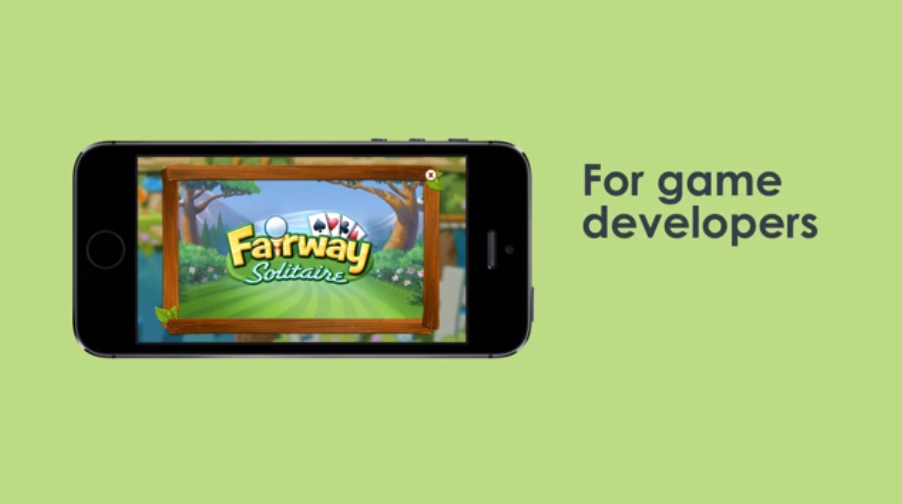
It’s quite short, and you have to make sure you include the essentials: your app name, key benefits or gameplay, and a call to action. It makes for a very dynamic video that’s to the point. Here is a selection of some top creatives by Chartboost (we produced that last one – Jurassic World):
Here are a few companies that can help you either monetize or get users with video ads:
- Chartboost
- Vungle
- AdColony
- AppLovin
- TapJoy
- Milenial
- MobFox
A few tips for your video ad (usually 15s to 30s):
- Insert a clear “Download now” call to action at the end of your video
- Pay close attention to your “download frame”/”end card”: the graphics displayed after the video, where you should have a clear call to action as well. Don’t hesitate to experiment with it.
- Maximize screen real estate: if you’re advertising in a portrait app, plan for a video in portrait mode (especially if your app is in portrait as well). Same thing for your “download frame”/”end card”. Vungle states that CTR increases 22% and conversion increases 6% when an ad matches the device orientation.
- Focus on showing the key parts: impressive gameplay or cool benefits of your app
- Keep any text you’re displaying very short and big enough (they’ll be seen on a mobile device and have to be readable)
The TV ads trend for mobile app promotion
You’ve probably heard about the Superbowl commercial for Clash of Clans, that cost Supercell around $9 millions, and later became the most popular Super Bowl ad on YouTube.
If Supercell (and Machine Zone with Game of War) spends that kind of cash on a TV commercial, it’s for brand recognition/perception. The idea is to make it more likely for users to download the app when they will see an ad on Facebook or Twitter.
But that doesn’t mean TV is not a good channel for user acquisition. At the App Promotion Summit 2015 in London, Lieferando and Adjust shared an interesting case study on Lieferando’s TV campaigns.
Using their Business Intelligence tool and RapidApe they were able to identify which downloads result from the TV ad campaigns (even though it’s not 100% accurate) and to find out which programs and spots were the most effective. They adjusted the targeting and decreased the CPI by 70%.
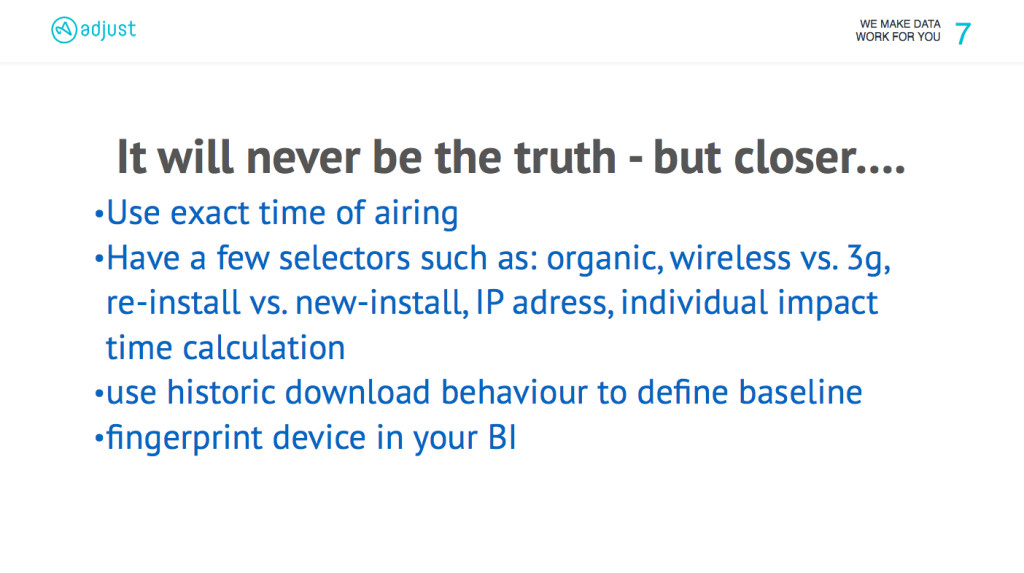
We shared what we believe were the most interesting points in our App Promotion Summit summary post and you can find the full video below.
TV ad campaigns for mobile apps are not cheap, but they are getting more and more affordable and can prove to be a very interesting user acquisition channel. So you might want to add this to your existing marketing mix.
A few tips:
- Don’t assume that you need to display your ads during the most viewed programs. Test out TV programs out of prime time and see what works best.
- Test out your video ad creatives on Facebook, Instagram, YouTube (or specialized video ad networks) and use the ones that work the best for your TV ads
Video on your app website or landing page
Increase conversion with a video on your app website so visitors can get what your app is all about quickly, or see some gameplay.
If your app website or the landing page you’ve created has the right layout, your potential customers will get everything at a quick glance: your headline along with a short description, your promo video and a call to action (CTA) to download the app.
Here is a good post on landing page design for an app.
You actually don’t have to wait until your app is released to embed your promo video on your website. You can have a “coming soon” version, with a call to action inviting to get notified when the app launches. With some video platforms like Wistia, you can even have a sign-up form directly at the end (or during the video).
Once your app is available, change the video with the app store badges at the end as well as your CTA.
A few tips for embedding a video:
- Put the video above the fold, or right after your call to actions (usually the app store badges)
- Pick the right thumbnail, one that integrates nicely and will get viewers to click. Don’t hesitate to create a custom thumbnail.
- If you use a “play button” rather than a thumbnail, make sure it’s visible enough so visitors know there is something to see there.
A few examples :
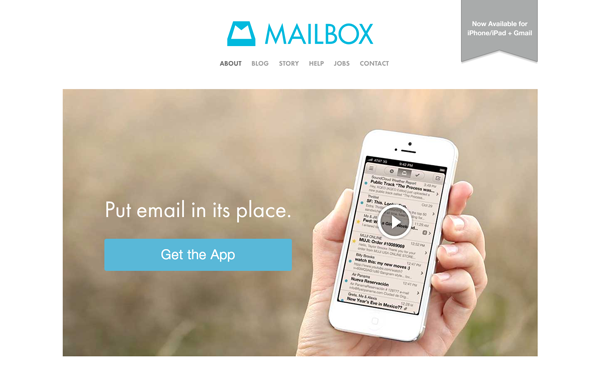
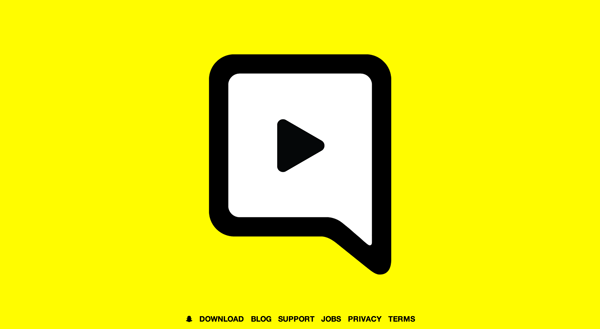
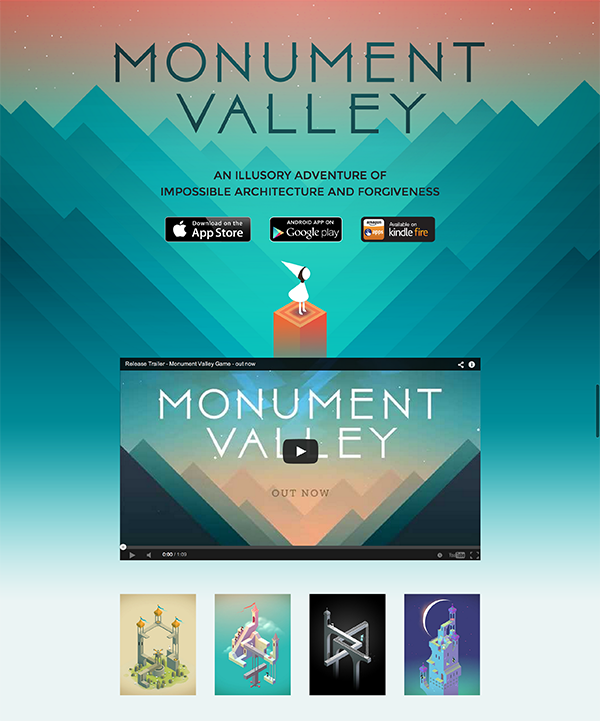
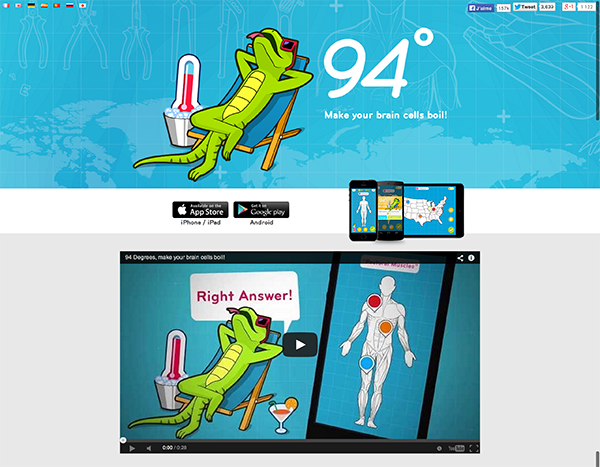
Video platforms we recommend to embed your video:
- Wistia
- Vimeo
YouTube
When talking about video, YouTube is obviously part of the discussion.
While it might not be the perfect platform to embed your video (ads before the video, banners, thumbnails at the end, etc.), you have to put your video on YouTube.
And not only because you can use that YouTube link in everything Google (Google Play Store – see above – or Gmail – see further below)…
…But because YouTube is simply the second search engine in the world.
An engaging video with a good amount of views (it’s not all about the views, engagement is also taken into account by YouTube’s search algorithm) will help your app get more exposure.
Whether you have an app for football fans or a todo list app, helping potential customers find your video through YouTube will get you more downloads. And since they’ve watch your app promo video, they’ll already know what they’re getting into.
A few tips to get your video found (it’s really quite similar to ASO):
- Choose the right title, making sure your app name and some keywords are in there (but keep it user friendly). Don’t hesitate to add “official”: as more and more videos and reviews of your app are shared, you want the one you crafted with love (or had someone produce) to be found easily
- Description
- Include a link to your app or website in the first 2 lines (the ones initially showed to viewers)
- Make sure to include keywords in your video description. It can be the voice over script, your app pitch or description, etc.
- End the description with other important links
- Choose the right tags, and put the most important terms first
- Create a custom thumbnail and make sure it works well when it’s both big and small
Get your app reviewed by bloggers and journalists
Bloggers and journalists are busy.
Really busy. At least the ones you want to review and talk about your app.
They receive hundreds of emails. Some have terrible pitches, some have good ones.
We’ve talked before about how to pitch your app and by including a YouTube link to your video in your pitch you give to your contact a quick and easy way to understand what’s unique about your app.
“A video provides the quickest way to initially assess your app, letting [bloggers] know if it’s worth downloading and testing further.”
– Erica Sadun – The Unofficial Apple Weblog (TUAW)
It’s easier for them than reading a press release. Or than actually downloading the app, creating an account (give them logins if you need them to do that by the way) and trying it.
With a video, they can watch the first 10 seconds. If it looks like something worth their time, they’ll probably watch the rest of the video.
And if they like it what they’re seeing, then they can download your app and try it out.
“Most bloggers use Gmail, and a YouTube video in an email pitch catches the eye more than any other link.”
– Maxime Perignon – AppAdvice Daily
A few tips:
- You can also put a link to your video in your press release
- Again, make sure you have a good thumbnail
Email signature
One of the great things about Google is that they integrate their products one with the other.
So when you have a YouTube link in your email (not the short YouTube URL though, the full one), it displays a video thumbnail at the end of the email.
Once your contact opens your email (that’s why you need a good headline/subject), if he uses Gmail he’s just one click away from your video.
Not only will your contact appreciate it, it also means that you drastically increase your chances of your app being considered for review: once the video is launched, your pitch starts!
Influencers in your niche
In our app marketing strategy guide we talk about getting feedback from influencers early on.
Just as bloggers and journalists, the people you’re asking feedback to are most likely busy. Sending them a short email with a YouTube link makes it easy for them to decide if they’re going to help you.
When you reach out to people, don’t just ask them “what do you think”. Try to have precise questions, that they can answer in a few minutes.
A few other ways to use your video
There is no requirement for length, but keep in mind that people’s attention span is short. So we’d advise against going over 60 seconds.
Product Hunt
For startups and app developers, a successful Product Hunt launch campaign can do wonders. And a good video goes a long way!
Startup-Videos
If you’re a startup and you’ve put more budget in to produce your video (basically if you have an on-location video for your app or some custom animations, with some nice storytelling) then you can submit your video on Startup Videos to give your app more exposure.
Video on Social Media: Facebook/Twitter/Instagram/Vine
Once you have your video, you should of course share it on your social media accounts to let your followers know about your app or game.
Now that Instagram gives the possibility to have videos (including landscape format), it gives you another place to share yours.
And if you feel like it, you could even produce a 6 seconds video for your Vine account!
Pitching / App Awards
Ever had to pitch your app on a stage? If you haven’t, you should start looking for contests and awards where you could do that.
If you have ever tried doing a live demo of your app, I bet it didn’t go as smoothly as you had hoped: internet connection is not working, something that always worked great before bugs on the app, you’re a bit stressed out and can’t present the app well, etc.
But if you have a well-thought video that shows what’s great about your app in a short time, then you just have to launch it while you’re on stage.
If everything else goes wrong (I hope it doesn’t) at least they know what your app does or how your game looks. And you can keep your focus on pitching the aspects not covered in the video and answering questions.
Sending out a cool video when you’re applying to an award also gives a quick way to the jury members to evaluate your app.
Exhibitions
What better than a cool video to catch the eye of the attendees passing by your booth? Besides maybe some booth babes (although they probably don’t work that well).
Put an HD video on a screen, and you make sure that people can get a nice introduction to your product.
A few tips:
- It will work better if the video can be understood without sound
- If we produced the video, ask us for an uncompressed HD file for maximum quality
Investors / Crowdfunding platforms
It can be hard to pitch an app that doesn’t exist yet.
But what if you need funds to actually develop it?
Video can be produced working only with screenshots or .psds, and can help you pitch investors or potential backers.
On a crowdfunding platform like Kickstarter or Indiegogo, you don’t want to show only the app: you have to tell the story behind it as well as the team.
If you’re pitching to investors, what’s great about having the video is that you can put the app in its best light.
No messy live demo. And you keep your energy for the speech about your team and objectives.
Forums
A good way to promote your video, find early adopters and maybe even influencers is through forums relating to your app niche.
Of course you have to get some authority there and be involved with the forum before starting to do any promoting of your app. But if you identify the right forums and start early this shouldn’t be a problem.
Once you have something to show (first designs, screenshots), start talking a bit about your app. If you have an app video, there’s no reason why you shouldn’t post it.
And if all promotion is forbidden on the forum (read the rules!), then have a link to your app website and/or video in your signature.
Quora
Quora is a great place to get some answers from experts or people in general.
Your app might be worth mentioning in some answers, as long as it’s relevant and not blatant autopromotion.
If you do mention it, think about embedding a YouTube video so that people see instantely what you’re talking about.
That’s about it for now. Bookmark this guide today: we’ll update it as new ways of using video for app promotion become available.

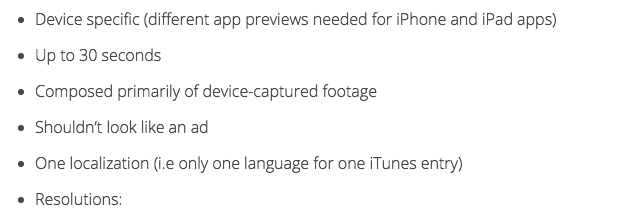

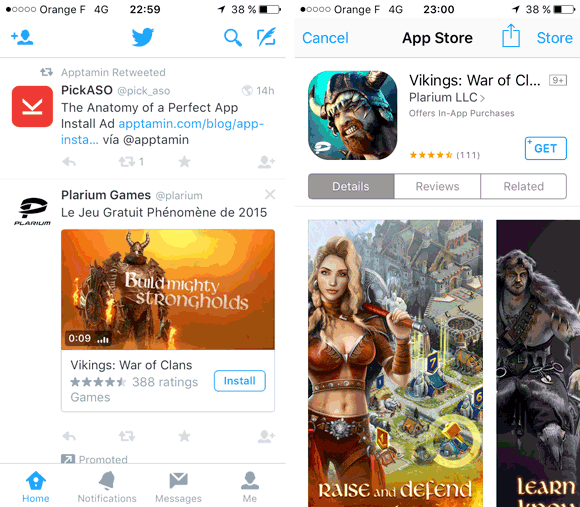
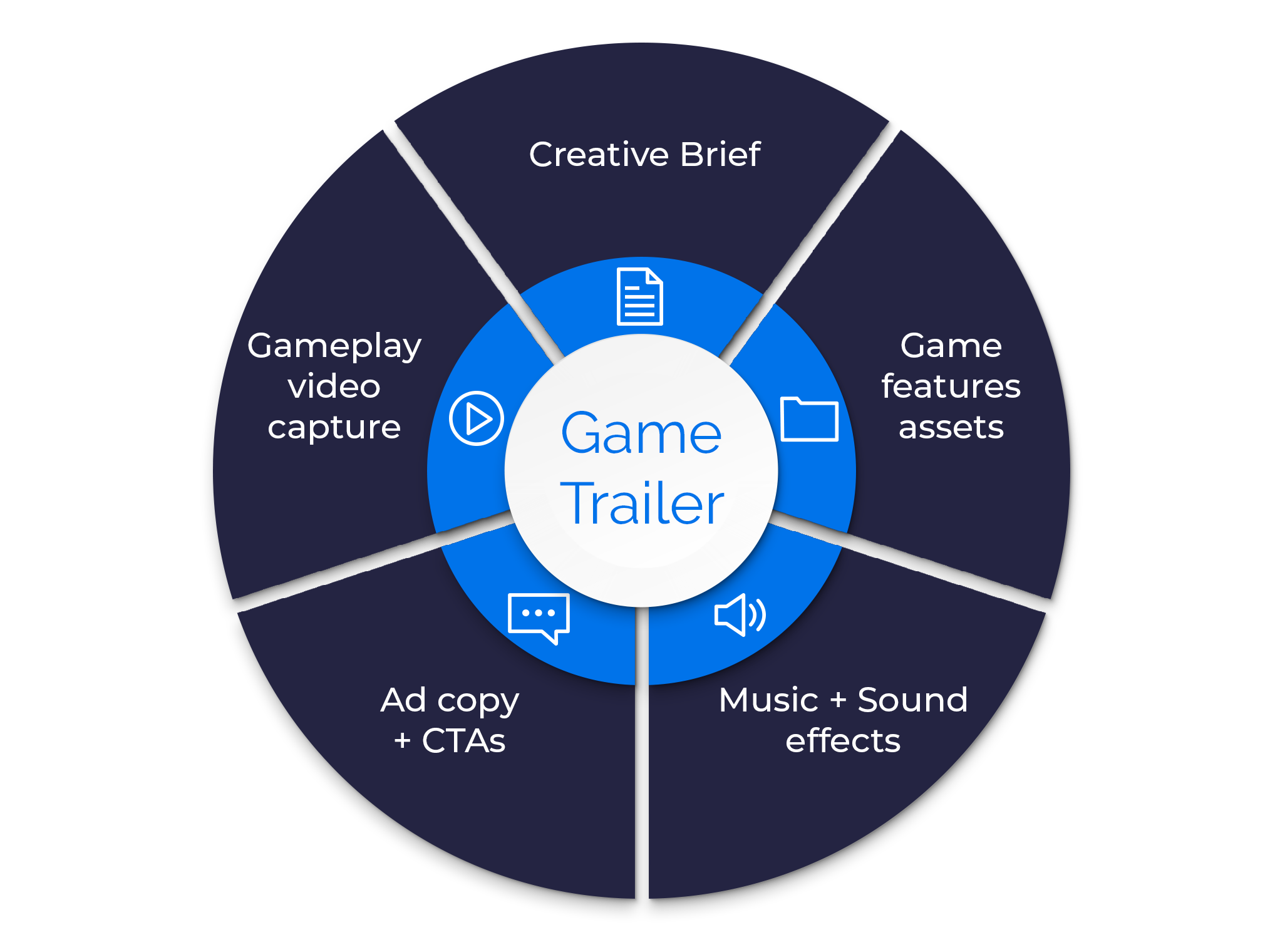

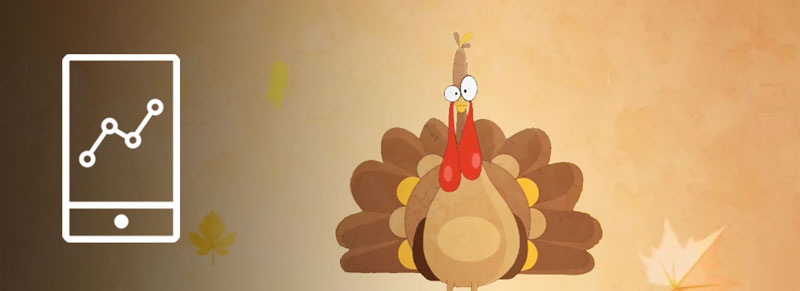
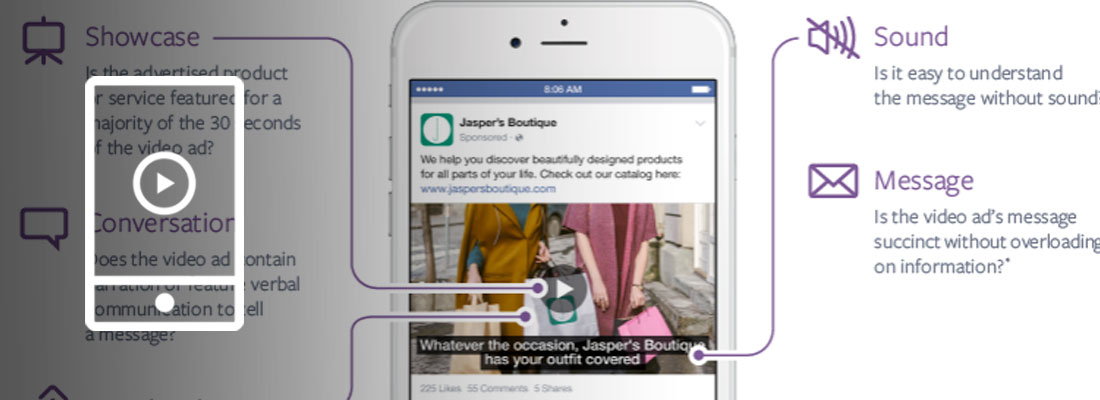
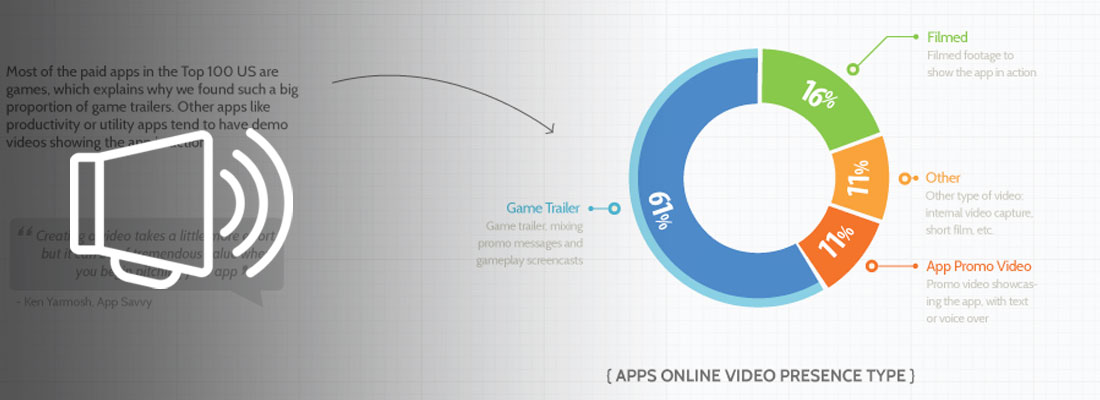

Test comment